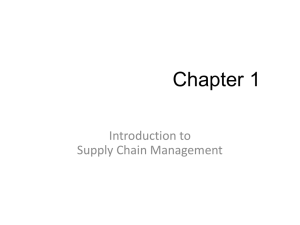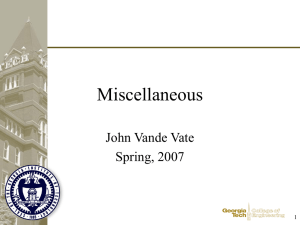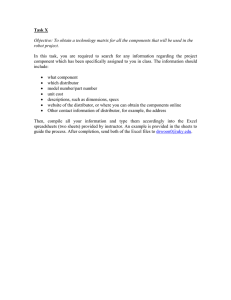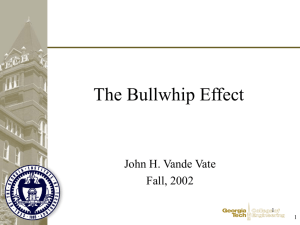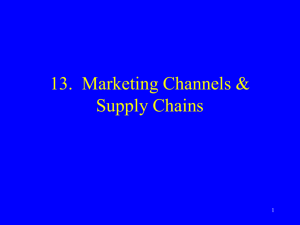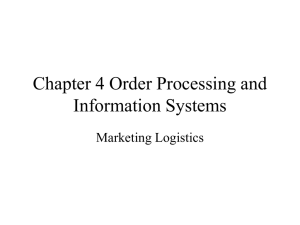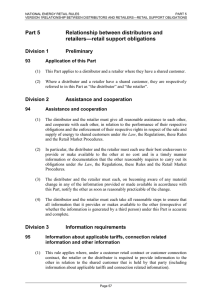c) Registration number d) Maintenance
advertisement
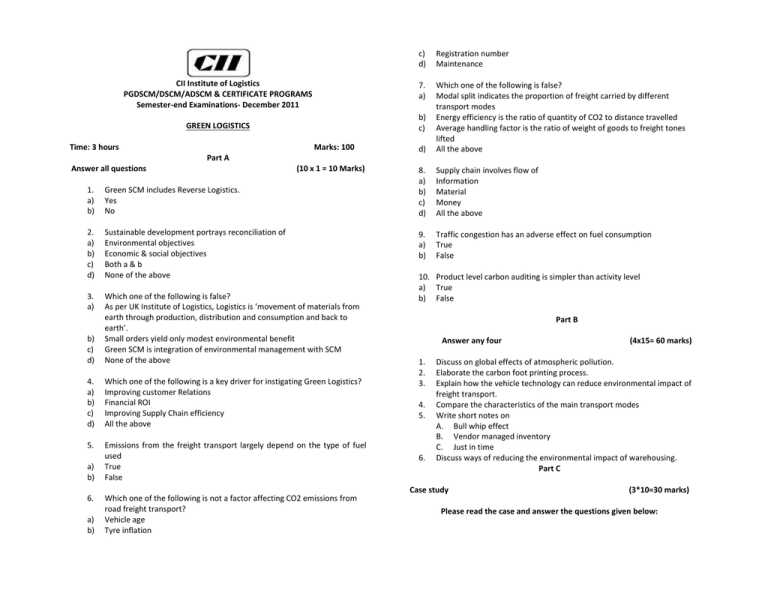
c) d) Registration number Maintenance CII Institute of Logistics PGDSCM/DSCM/ADSCM & CERTIFICATE PROGRAMS Semester-end Examinations- December 2011 7. a) GREEN LOGISTICS b) c) d) Which one of the following is false? Modal split indicates the proportion of freight carried by different transport modes Energy efficiency is the ratio of quantity of CO2 to distance travelled Average handling factor is the ratio of weight of goods to freight tones lifted All the above 8. a) b) c) d) Supply chain involves flow of Information Material Money All the above 9. a) b) Traffic congestion has an adverse effect on fuel consumption True False Time: 3 hours Marks: 100 Part A Answer all questions (10 x 1 = 10 Marks) 1. a) b) Green SCM includes Reverse Logistics. Yes No 2. a) b) c) d) Sustainable development portrays reconciliation of Environmental objectives Economic & social objectives Both a & b None of the above 3. a) b) c) d) Which one of the following is false? As per UK Institute of Logistics, Logistics is ‘movement of materials from earth through production, distribution and consumption and back to earth’. Small orders yield only modest environmental benefit Green SCM is integration of environmental management with SCM None of the above 4. a) b) c) d) Which one of the following is a key driver for instigating Green Logistics? Improving customer Relations Financial ROI Improving Supply Chain efficiency All the above 5. Emissions from the freight transport largely depend on the type of fuel used True False a) b) 6. a) b) Which one of the following is not a factor affecting CO2 emissions from road freight transport? Vehicle age Tyre inflation 10. Product level carbon auditing is simpler than activity level a) True b) False Part B Answer any four 1. 2. 3. 4. 5. 6. (4x15= 60 marks) Discuss on global effects of atmospheric pollution. Elaborate the carbon foot printing process. Explain how the vehicle technology can reduce environmental impact of freight transport. Compare the characteristics of the main transport modes Write short notes on A. Bull whip effect B. Vendor managed inventory C. Just in time Discuss ways of reducing the environmental impact of warehousing. Part C Case study (3*10=30 marks) Please read the case and answer the questions given below: Supply Chain Dynamics: Forrester (1958) noted that attempts to reduce poor supply chain dynamic behavior can exacerbate the problem. Counterintuitive behavior occurs because the causes of the behavior are obscured from the decision makers in the chain. A recent example of this is given by Disney, Naim and Potter (2004). In a controlled experiment using the well-known MIT Beer Game, they implemented a number of scenarios including a traditional structure, electronic point of sales (EPOS) and vendor-managed inventory (VMI). The three supply chain scenarios researched are summarized in Figure given below. A traditional supply chain may be characterized by four’s serially linked echelons in a supply chain. Each echelon only receives information on local stock levels and sales, and will determine its order on its supplier using this knowledge, in conjunction with forecasts, work-in-process targets and inventory – holding requirements. Customer Traditional supply chain Retailer Distributor Warehouse Factory echelon structure aims to take a holistic approach and simultaneously manage both the retailers and distributors stocks. The distributor is given information on the retailer’s sales and stock levels. As a consequence, the retailer does not need to place orders on the distributor, because the distributor dispatches adequate amounts of material to ensure that there is enough stock at the retailer to satisfy customer service levels. The other echelons in this scenario, namely the warehouse and factory, retain the traditional ordering structure. Disney, Naim and Potter (2004) made some interesting discoveries when investigating these three scenarios. The traditional supply chain behaved much as predicted, and extreme bullwhip was induced along the whole supply chain, resulting in increased inventory and backlog holding costs. In the EPOS scenario two modes were stimulated: one in which no communication between players was allowed, and a second in discovered that EPOS, both with and without collaboration, incurred high negative inventory (backlogs) costs. Nevertheless, EPOS with collaboration doses well at reducing bullwhip in the supply chain. Answer the following: 1. What will be the impact of elimination of one or more echelons in the supply chain? 2. ‘Poor communication is the core of bull whip effect’- justify this statement. 3. Which of the three models can perform better? How? EPOS supply chain Customer ***************************************** Retailer Distributor Warehouse Factory Customer VMI supply chain Retailer Distributor Warehouse Factory Flow of information upstream Flow of materials downstream In the EPOS- enabled scenario, the end-consumer sales are transparent to all members of the supply chain. This is equivalent to the situation in grocery supply chains, where the data is available electronically directly from the retailer and can be used by all supply chain members to help in their stock-holding and ordering policies. However, each echelon still has to deliver, wherever possible, the goods ordered by its immediate customer. In the VMI scenario, the distributor in the two-
